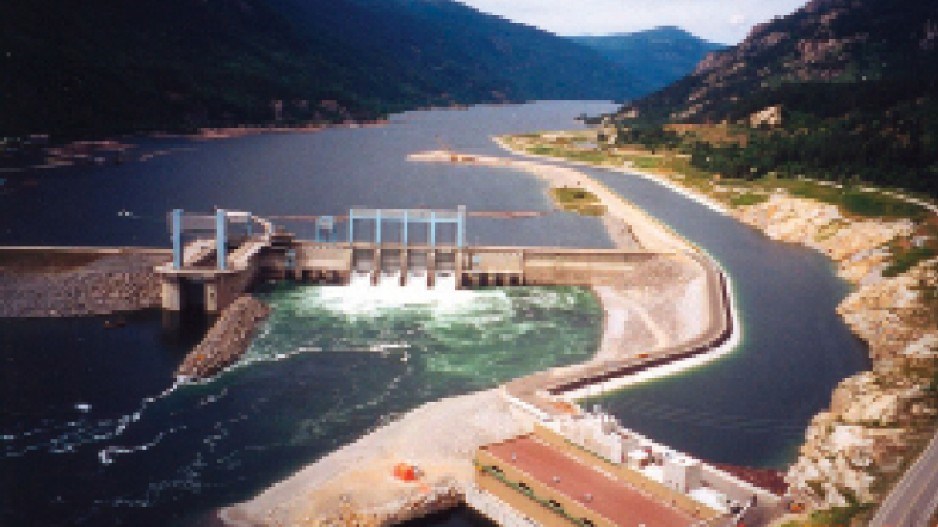Faced with growing criticism over a stable of increasingly pricey capital projects and a ballooning debt, BC Hydro is also paying a $126 million bill to renovate a decades-old dam that generates no electricity for the Crown corporation.
According to its updated service plan, BC Hydro plans to replace the spillway gates at the Hugh Keenleyside Dam near Castlegar “to increase public and employee safety and ensure the gates meet flood discharge reliability requirements.”
Completion of the job is expected in the fall of 2016.
The goal of the project – to ensure Keenleyside’s flood discharge requirements are maintained – is in line with the dam’s origins. But why BC Hydro is charged with paying for that project is less clear.
Keenleyside was one of three dams built in B.C., along with Mica and Duncan, as part of the Columbia River Treaty. The treaty was a deal struck between Canada and the United States in 1960s to control the periodic Columbia River flooding and to generate electricity on both sides of the border.
Because three of the four treaty dams were built in B.C. – the lone dam on the U.S. side, Libby, is in Washington state – the “Canadian Entitlement” provision was drafted. It entitled Canada to one half of the additional power generated south of the border from the storage provided by the Canadian dams. The benefits of that power, specifically the revenue generated from its sale, go to the B.C. government, not to BC Hydro.
For the first 30 years of the treaty, the province sold its entitlement for a one-time, upfront payment of $254 million. Since 1998, the year the entitlement returned, Victoria has netted between $200 million and $300 million annually from the U.S.
When Business in Vancouver asked BC Hydro why it, and subsequently its customers, are responsible for maintaining a dam that provides no electricity, BC Hydro responded in an email that Keenleyside “is a storage dam that was built under the terms of the Columbia River Treaty. BC Hydro is paying for the upgrades because this is our asset and we are responsible for ongoing maintenance.”
In the same email, BC Hydro wrote: “The dam provides flood control and increased downstream power generation through the regulation of flows. The upgrades to the spillway gates will improve our ability to safely manage flood waters downstream, which protects both the dam and downstream communities.”
The downstream power generation cited in the email happens in two places. One instance, as previously discussed, is in the U.S., and the B.C. government, through the Canadian Entitlement provision, is compensated for that.
The only other site of electricity generation is a small two-turbine powerhouse called the Arrow Lakes Generating Station, located about 400 metres downstream from Keenleyside.
Arrow Lakes is co-owned by the Columbia Power Corp. and the Columbia River Basin Trust. Built in 2002, Arrow Lakes generates electricity for approximately 75,000 homes. It sells all of that power to BC Hydro.
According to its 2011 annual report, BC Hydro paid Columbia Power $47 million for the power generated at Arrow Lakes. In 2010, it paid $48 million.
BC Hydro’s 2012 annual report makes no mention of any payments to Columbia Power.
Like Keenleyside, the Duncan dam generates no power. But it provides some storage for the BC Hydro’s downstream Kootenay Canal plant.
Mica generates power.
A request for Ministry of Energy and Mines comment was not returned by press time.




